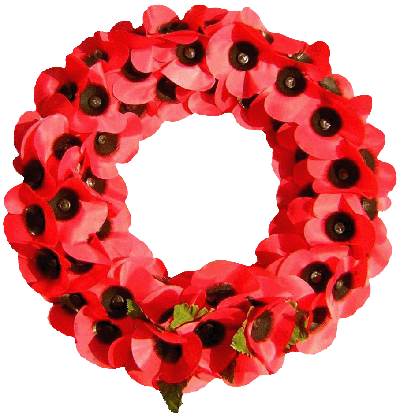Charles Whitehorn
Private 17476 Charles Whitehorn, 5th battalion, Royal Berkshire Regiment.
Charles was born in Newbury in 1887, the son of Thomas Whitehorn and his wife Emma née Woodley. Thomas was a railway worker; originally from Uffington, he moved the family to Newbury (5 Axe & Compass Yard, St Mary’s Hill) in the late 1870s, where he was variously described as a ‘railway labourer’ or a ‘porter’. The family home in Newbury was very conveniently placed a few yards from the railway station and goods yard. Sadly he died at the age of 32 – he was buried in Newtown Road Cemetery, Newbury, on 20 June 1889.
Emma was left to support their young family: George Edward (born 1876), Caroline Kate (1883), Frederick John (1886) and Charles (1887). The couple had had three other children: Charles William and Henry died within days of their births in 1879 and 1881, but Emily (1885) lived for four years, dying only days before her father she was also buried in Newtown Road Cemetery on 8 June 1889. Kate married William Bird in 1902 before she too died, almost certainly as the result of complications during or after the birth of her child Amelia in 1903 – leaving Emma with another child to raise.
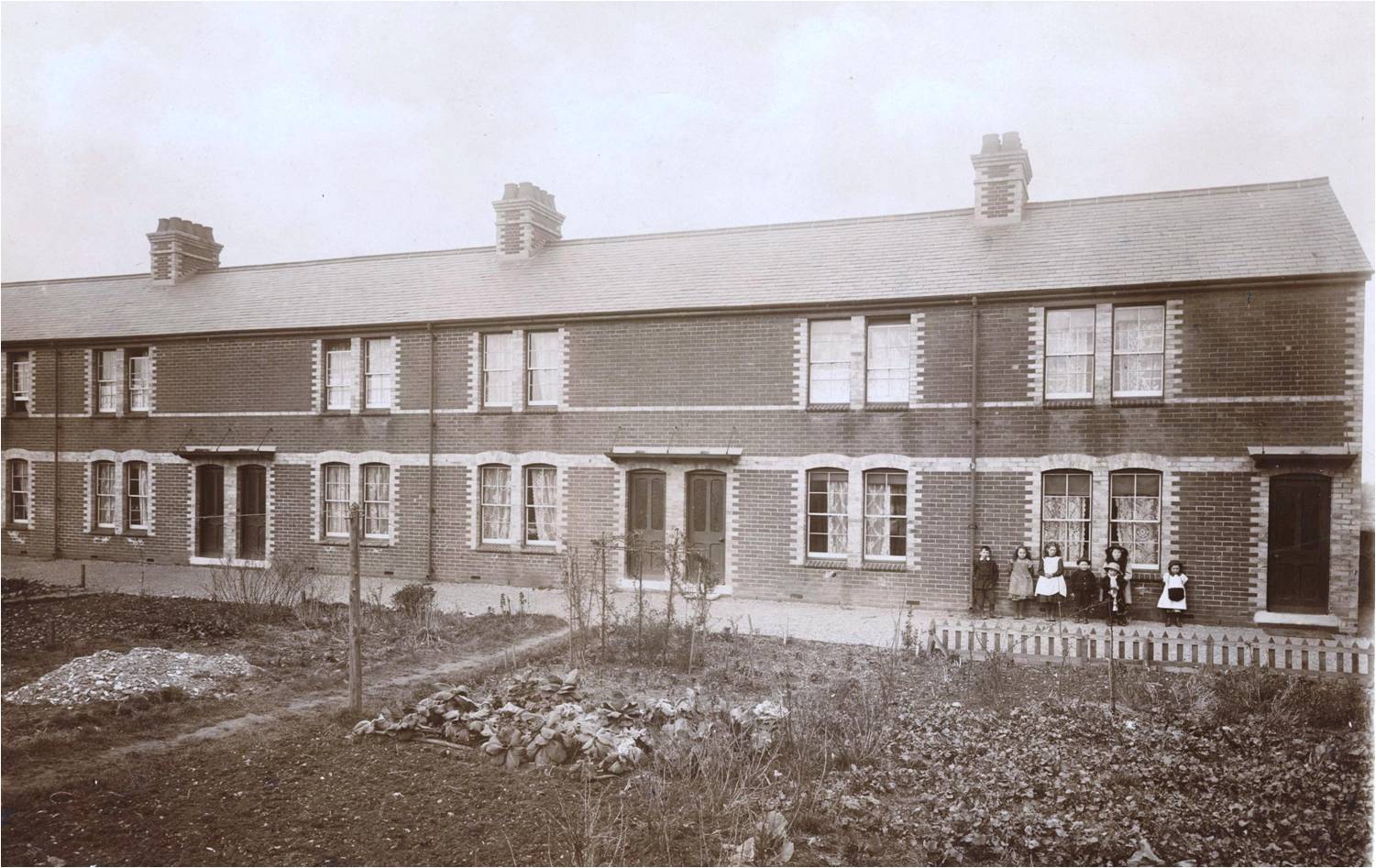
Corporation Cottages in Speenhamland, Newbury's first council houses. (No 1 is out of shot to the left) |
Emma died in 1912, not long after moving from the house she and Thomas had moved into over 30 years before to 1 Poplar Cottages, Jubilee Road (now 29 Jubilee Road). A few months later Frederick married Alice Bullock: they appear from Frederick's attestation form to have lived at separate addresses, 13 Corporation Cottages, Newbury and 1 Brewery Cottages, Donnington. This suggests that Frederick was working as a gardener for in Donnington, probably for the Palmers at Donnington Brewery, and was supplied with a tied cottage, yet Alice preferred to lodge with Mrs Evans (possibly a relative) in Newbury. The arrangement does seem bizarre, the two addresses are no more than a ten minute walk apart. Charles evidently gave Frederick as his next-of-kin (he was evidently much closer to Frederick than elder brother George) and also moved to Donnington, where he lived at 4 Cambridge Cottages, probably as a lodger.
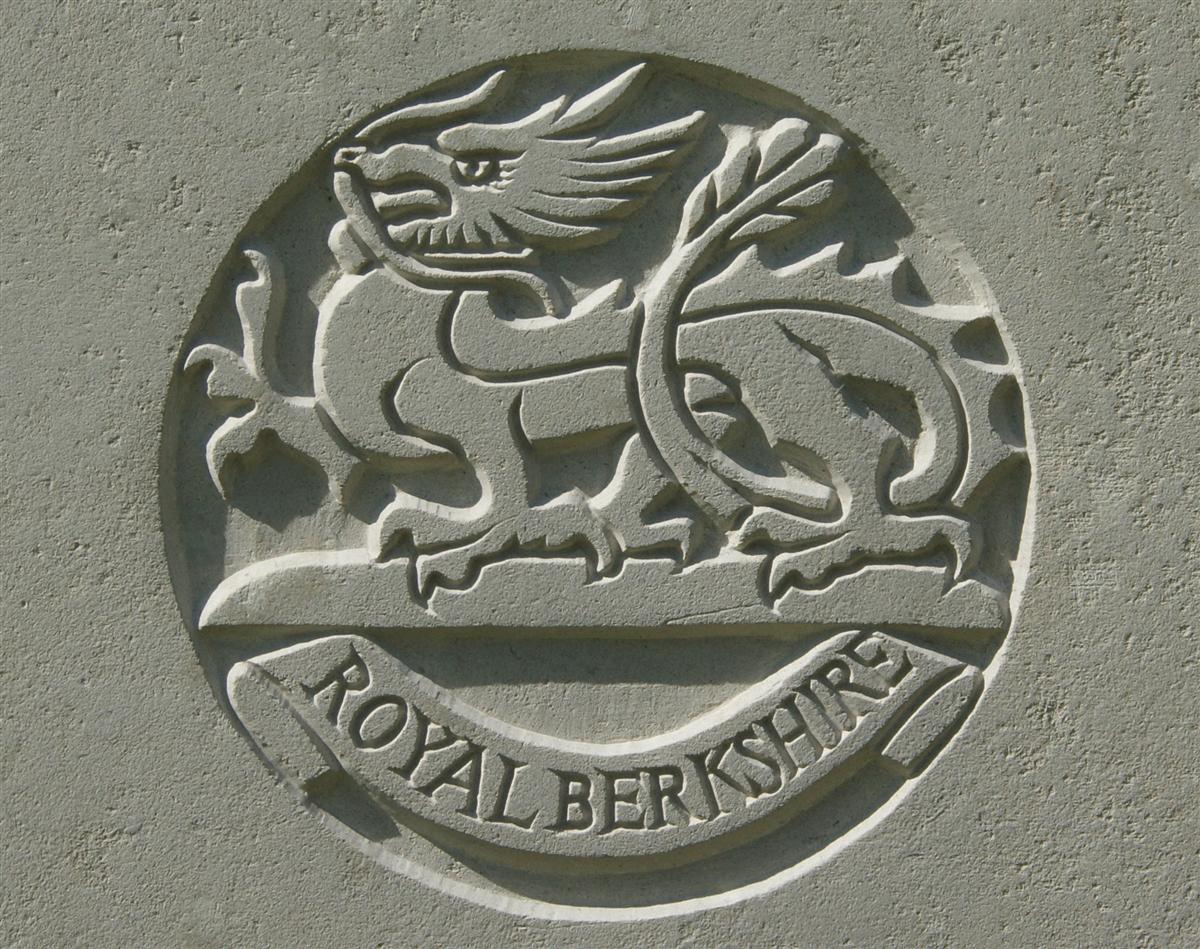
The regimental badge of the Berkshire Regiment, as used on CWGC headstones. |
Charles was not among the first rush to sign up for the army on the outbreak of war in August 1914, but he did not wait very long, enlisting on 21 April 1915 with the local regiment. On 22 December 1915 he crossed to France in a draft of replacements for the 5th Battalion, Royal Berkshire Regiment, which had suffered heavy losses in mid-October at the Battle of Loos. The battalion was still in the Loos area when Charles arrived.
Typical life on the Western Front consisted of short spells of a few days each manning the front line trench system, with longer periods behind the lines. Even when out of the line the men were kept busy, training or on working parties maintaining and expanding the trench system and other aspects of the British positions (gun emplacements, roads, light railways, etc).
Life in the front line that winter was miserable, Captain Rickman wrote in November:
The weather was vile, the trenches knee deep in liquid mud, the trench constantly falling in and needing continuous work to make it safe.
These conditions lasted six days when we came back into billets. We go straight back again the day after tomorrow, the weather is still vile, so we must expect a repetition of our last tour. We have a new Brigadier, a most cheerful man and almost exhilerating which is what one wants out here, especially when the weather is like it is.
On New Years Day Charles would have gone into the line for the first time at Festubert, Pte Harding described their territory
”Two miles of mud up Hulloch Alley, across the quarries, along Stickey Trench to West Face and Russian Sap to craters A and C. The forward lip of crater A abutted upon an unoccupied one. Straight ahead was a huge slag heap and our artillery shelled it most days. With a low whine they came over and dropped like a sack of coal. The explosion was the only thing we had to cheer about in that Godforsaken hole”
On 12 February 1916 Charles' name appeared in a casualty list printed in the Reading Mercury, but his wound must have been relatively minor since he was not out of action for long.
His first experience of a major battle was also his last; he died on the 3rd July 1916 - the 3rd day of the Battle of the Somme. Charles’ battalion were badly mauled during an assault on the village of Ovillers. They suffered 340 casualties including 104 men missing most of whom, including Charles, would later be assumed to have died. Two days earlier the 1st Battalion, Royal Berkshire Regiment had taken even heavier losses assaulting the same village – neither attack was successful.
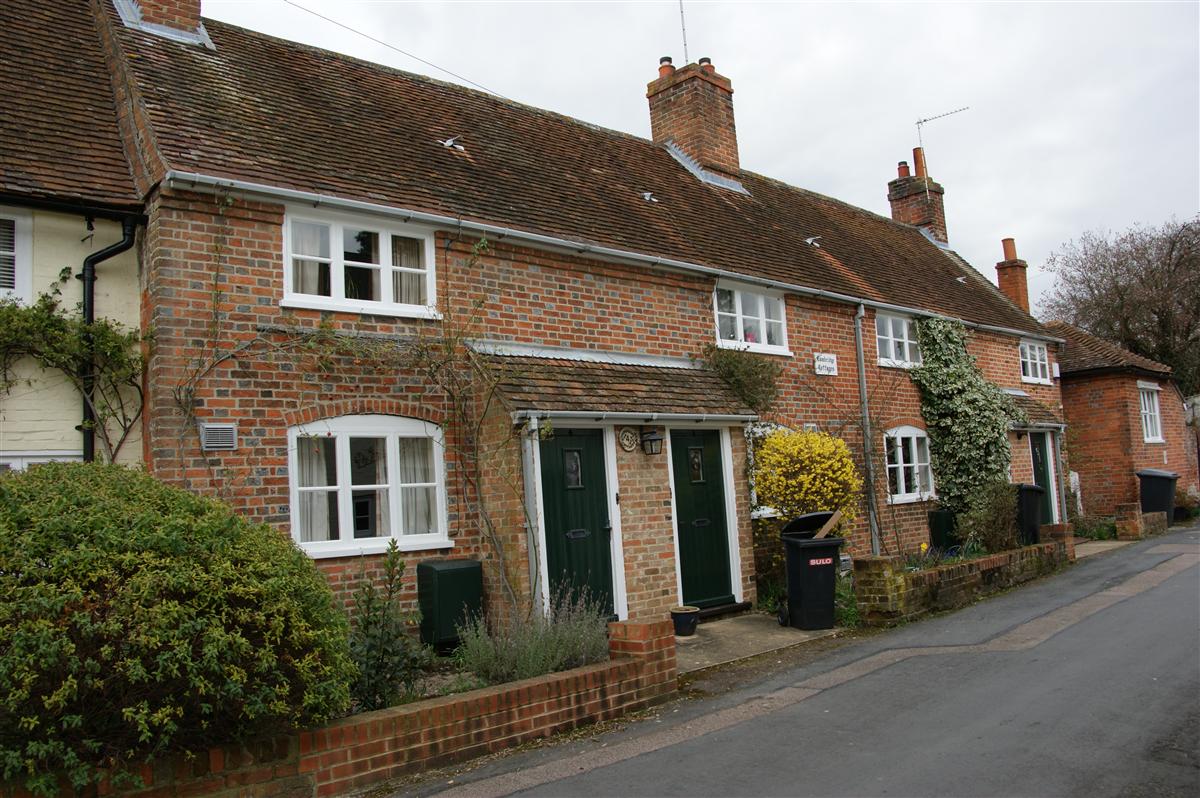
Cambridge Cottages in Donnington, No 4 is the nearest of the block of four red-brick houses. |
The news reached Newbury a month later:
Newbury Weekly News, 10 August 1916 – Missing
Pte C Whitehorn, July 3rd, 1916, 5th Royal Berk, 17476, of No 4, Cambridge-cottages, Donnington, near Newbury.
Confirmation of Charles’ death was a long time coming:
Newbury Weekly News, 12 April 1917 – Killed in Action
WHITEHORN – Pte C Whitehorn, 5th Royal Berks Regt, reported missing since July 3rd, 1916, aged 29.
More details were printed in the next edition:
Newbury Weekly News, 19 April 1917 – Local War Notes
Pte. Charles Whitehorn missing since the 1st July is now officially reported to have been killed by a bursting shell. In civil life he was employed by Mr Sergeant builder of Stroud Green and joined up in April 1915. After training at Portsmouth he went to France with his battalion and in 1916 was wounded. He recovered sufficiently to again take his place in the firing line in June and was killed in July. He was a member of the Bellringer Guild.
The War Office had to take all reasonable measures to ensure that death was not officially ‘assumed’ too soon, it took months for information regarding soldiers taken prisoner by the enemy to trickle back to England. However, by 1916, all parents knew what a notification that their son was ‘missing in action’ usually meant.
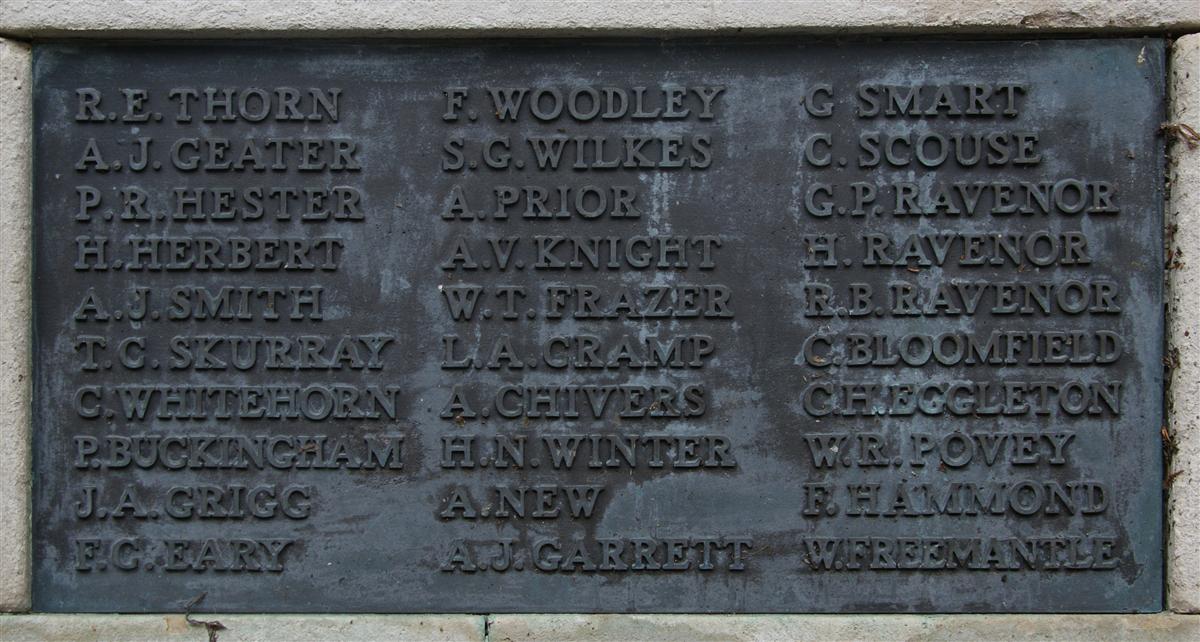
Charles' name on Newbury War Memorial (lower-left) |
Locally Charles is remembered on the Newbury Town War Memorial, the memorial board and roll of honour in St Nicolas’ Church, Newbury. One of his hobbies was campanology or bell-ringing, which resulted in his name appearing on a rarely seen brass plaque in the bell ringers’ chamber in St Nicolas’ church.
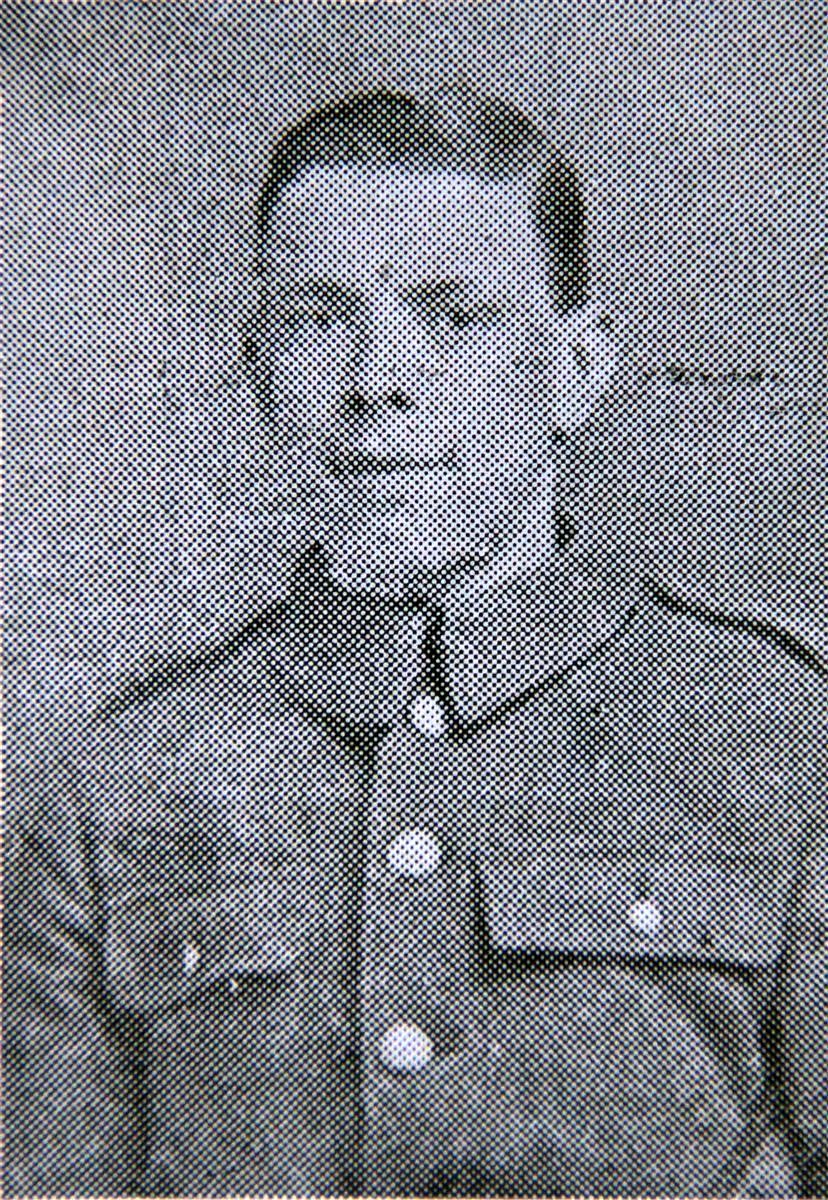
George Whitehorn, Charles' cousin from Uffington. |
Brother Frederick also volunteered in 1915, attesting under the Derby Scheme in November (the scheme allowed men to indicate a willingness to serve at a later date - as and when needed). As a part of the attestation he was given a medical, which showed he had a 'greatly dilated heart'. This explains why he was not called up for active service along with other married men of his age. However, he was eventually called up on 12 October 1917, for service in 594 Home Service Employment Company, Labour Corps. Presumably his service took account of his heart problem (certainly he was not sent overseas), though his occupation as a gardener suggests he may have been fit enough for some physical labour. He was posted to 622 Home Service Employment Company on 25 October 1917 and to 643 Home Service Employment Company on 25 August 1918.
Charles’ nephew, Frederick Whitehorn, the son of his elder brother Frederick, died as a result of his service in the Royal Army Medical Corps during WW2; he is buried in Shaw Cemetery. His name is among those added to the Newbury Town War Memorial in 1950.
Another member of the family perished in the Great War: Charles’ cousin George Whitehorn from Uffington, the son of Thomas’ brother George, died serving with the 9th Battalion, East Surrey Regiment during the 3rd Battle of Ypres.
